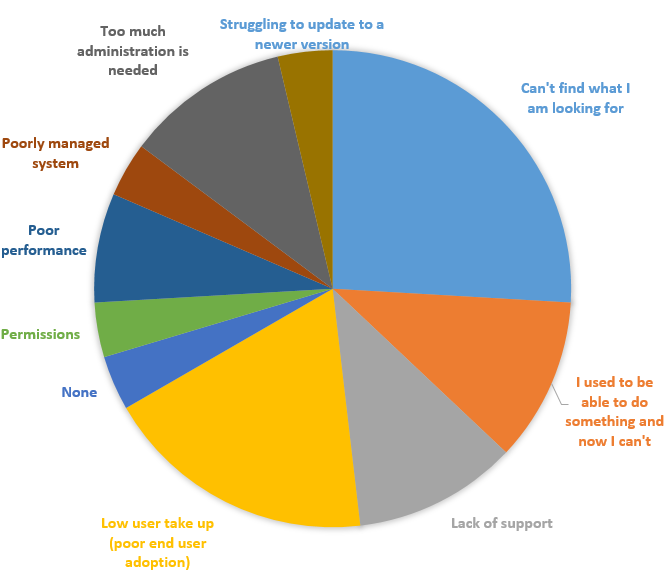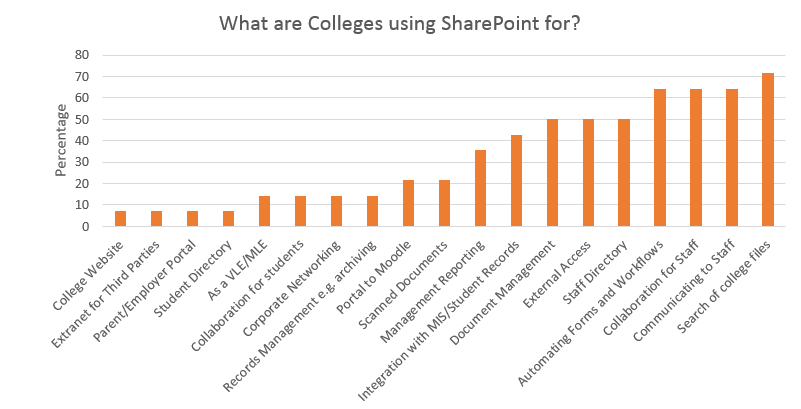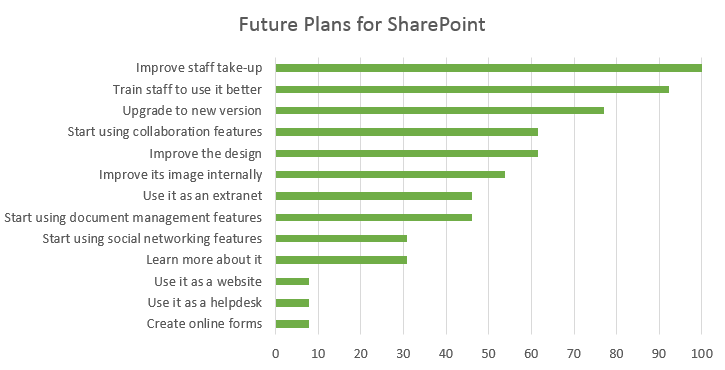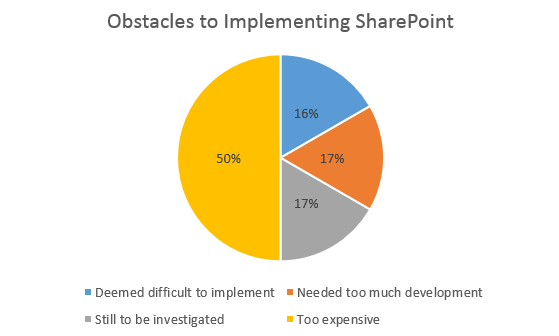Further Education SharePoint Research - The Results
Introduction and Background
Parabola has conducted an investigation of SharePoint adoption in Further Education, this report concludes the results. The research was split across two surveys, one for colleges already using SharePoint and one for colleges not using SharePoint. There were twice as many respondents to the SharePoint user surveys, but this may not be representative of the whole sector. Research into SharePoint was always more likely to attract more interest from colleges already using SharePoint.
Parabola decided to conduct this research as we are often asked questions like "what are other colleges doing" by clients. We could answer what our clients were doing with SharePoint but felt it would be more representative if we studied the wider market and had real opinions and examples to show colleges. The Research has a double benefit in that it helps us focus our further research, studies and training to ensure our staff are ready to create SharePoint solutions for the challenges colleges are facing.
We had respondents from 6th forms and further education colleges, large and small from around the country representing a broad spectrum across the sector.
What colleges using SharePoint told us
The research showed that there is a significant level of Microsoft server software expertise (but not necessarily in SharePoint) in the FE market as 46% of the respondents implemented SharePoint internally with no outside consultancy. These findings were surprising as SharePoint server expertise and experience have been quite scarce on the IT market over the last 5 years as indicated by the high rates being charged by agencies for SharePoint contract staff. The other 54% of respondents were split between 47% who used third party SharePoint consultancies and only 7% using a mixture of the two. Continued investment and research by Microsoft ensures that SharePoint is leading the market in functionality and form, not just for education but for business of all types.
Colleges are managing to keep up to date with supported SharePoint versions to some extent. 34% of colleges were still using SharePoint 2007, 60% were using SharePoint 2010 and there were a few earlier adopters, 6% using SharePoint 2013. This indicates that despite budget reductions in the FE sector, SharePoint upgrades are still occurring in FE, suggesting that those colleges who use SharePoint are continuing to do so and are seeing benefits since they would not otherwise invest in an upgrade.
As well as reporting benefits, the research showed some colleges have difficulties with SharePoint and upgrades. The survey identified the most common pains for staff across colleges.Do your staff report any of these problems? If so you are not alone. But there are ways to solve them.
The pains felt by staff were reflected in the overall feeling towards SharePoint in the colleges. Whilst no-one was very dissatisfied, it seems none of the respondents feel they are using SharePoint to its best and no one reported that they were Very Satisfied either. The results were 50% Satisfied, 43% slightly less happy with Somewhat Satisfied and 7% feeling Somewhat Dissatisfied with their current SharePoint situation. The 7% who were dissatisfied came from colleges where SharePoint was implemented internally with no external help.
The pie chart below shows the pains reported:

Further Education Colleges are getting some great value out of SharePoint, it’s interesting to see the wide selection of SharePoint uses that are being embraced:

Some of the colleges surveyed were using SharePoint for just one area, whereas others were harnessing their investment and using SharePoint for as much as possible. In some cases it may be a question of education, perhaps colleges are just not aware of all the different ways they can use SharePoint and or how best to do so. If you’ve already made the investment in SharePoint why not see if you can start using it for some of the ideas mentioned in the diagram?
Almost all the colleges were using SharePoint for search but no colleges reported using SharePoint as a digital asset library or for prospective student access to information. Both of which SharePoint is capable of.
Another area covered by the research was into perceived benefits of SharePoint. There are some oft stated benefits of SharePoint but what do users feel provides them with value? The diagram below summarises the benefits felt by staff at the colleges surveyed.

Over 70% of the colleges reported that they benefited from having up-to-date information, access to SharePoint from home and access to all their important information. These are key benefits of the features of SharePoint as for any business without collaboration software, lack of information or access to it are common gripes.
It seems that colleges want to take more advantage of the benefits as all but one of the respondents had an idea of where they wanted to take SharePoint next. 100% of those who had future plans with SharePoint wanted to improve staff take up.

What Colleges not using SharePoint told us.
Surprisingly half of the colleges not using SharePoint told us they have no system for document management, the others all used different systems. Unsurprisingly, more than half of them were using Moodle to share information with parents, governors and/or students and others were using an internally developed bespoke system, cementing earlier findings that the IT skills available in education are high.
All but one of the respondents had a staff intranet and the systems used can be seen below, all those colleges using Joomla for an intranet were also using it as a CMS. There were 6 other options as well as an ‘other’ field but these were the only responses, we were expecting to see some colleges using Moodle or Interact as an intranet.

All the colleges but one had considered using SharePoint in their organisation and those that had reported the following reasons for not implementing it. Although price was the major obstacle, there were a few others as shown below. Microsoft’s preferential pricing for education and SharePoint online are both ways to take advantage of SharePoint at a lower price.

“Still to be investigated” is an interesting option, suggesting that time may be a constraint when it comes to looking at new software in colleges
Conclusions
The FE colleges who have implemented SharePoint without external SharePoint expertise are receiving the least benefits and have the most problems.
Those colleges not using SharePoint do not seem to be using Open Source solutions because of the perceived benefits but instead because of the initial cost saving on licencing.
In Summary, the most common benefits of using SharePoint in FE are in the areas of document management (“access to files”), search (“finding information”), collaboration (“sharing information”) and communication. FE Colleges using SharePoint are often benefitting significantly, but poor user adoption is a very common issue and can become a barrier to progress with SharePoint. Colleges with low user adoption often have technical problems and feel they need more support. This can explain why future plans often relate to improving user adoption and trying to realise these benefits.
If you want to start feeling the benefits of SharePoint today drop us an email and we’ll get talking.

